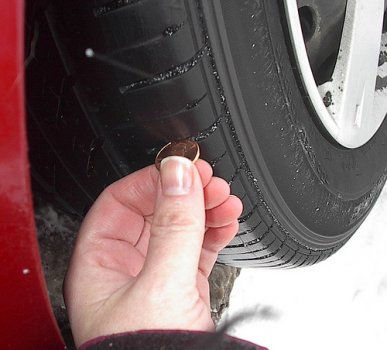Check of the vehicle
Check the vehicle carefully, making sure about the perfect functioning, especially of the brake, steering, suspension and lights systems and also of the state of the tires. Besides, verify the level of fuel.
Remember that a regular check of the good state of the tires and the measurement of the air pressure is what will protect you most from having trouble and will ensure you a good adherence and friction.
Inspect the state of tires visually in a regular way.
A worn out tire is a potential danger because it increases the possibility of a tire blowout or puncture. Check that the deepness of the drawings of the tire is not less tan 1.6 mm. You can help yourself by inserting a coin in one of the main channels of the drawing. Under 2 mm of deepness, the possibility of losing friction and efficiency at braking increases, especially on wet roads. When the drawing is worn out, the tire loses the possibility of evacuating water and the aquaplaning may be produced. The aquaplanning is the loss of contact between the tire and the road because of the water layer that is formed between both of them, which complicates any brake manoeuvre or change of direction.

It can happen that a tire is more worn out at one side than at the other, or in comparison with the one at the other side. In this case, you will have to check their pressure which may be varying due to any air loss, or problems in the alignment, or in the suspension. Rotate the tires periodically. Be aware that the tire doesn’t have lateral or central cuts or breakings that let the internal tissue of the tire be seen. If you notice something like this, you will have to replace it.
Control the pressure of tires
Air pressure must be measured with cold tires. Measure the pressure regularly, minimum once a month. Try to always use the same equipment. Use the quantity of pressure that is indicated by the manufacturer in the instructions manual.
Take into account that a lower pressure bothers driving, makes the useful life of tires shorter and increases the consumption of fuel and a higher pressure decreases the adherence to the road and wears out the tire in a uneven way.
Control alignment of tires
Trouble in this can be reflected in tugs in the steering and irregular wearing out of tires.
The average useful life of a tire is nearly from 40,000 to 60,000 kilometres. However, it will depend on the type of roads and the way you drive.

